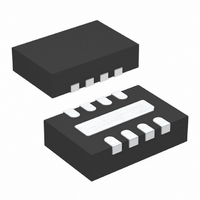LTC4058EDD-4.2 Linear Technology, LTC4058EDD-4.2 Datasheet - Page 9

LTC4058EDD-4.2
Manufacturer Part Number
LTC4058EDD-4.2
Description
IC CHARGER BATTERY LI-ION 8-DFN
Manufacturer
Linear Technology
Datasheet
1.LTC4058EDD-4.2.pdf
(12 pages)
Specifications of LTC4058EDD-4.2
Function
Charge Management
Battery Type
Lithium-Ion (Li-Ion)
Voltage - Supply
4.25 V ~ 6.5 V
Operating Temperature
-40°C ~ 85°C
Mounting Type
Surface Mount
Package / Case
8-WFDFN Exposed Pad
Lead Free Status / RoHS Status
Contains lead / RoHS non-compliant
Available stocks
Company
Part Number
Manufacturer
Quantity
Price
Part Number:
LTC4058EDD-4.2
Manufacturer:
LINEAR/凌特
Quantity:
20 000
Company:
Part Number:
LTC4058EDD-4.2#PBF
Manufacturer:
LT
Quantity:
7 500
Part Number:
LTC4058EDD-4.2#TRPBF
Manufacturer:
LT/凌特
Quantity:
20 000
APPLICATIO S I FOR ATIO
Kelvin Sensing the Battery (BSENSE Pin)
The internal P-channel MOSFET drain is connected to the
BAT pin, while the BSENSE pin connects through an inter-
nal precision resistor divider to the input of the constant-
voltage amplifier. This architecture allows the BSENSE pin
to Kelvin sense the positive battery terminal. This is espe-
cially useful when the copper trace from the BAT pin to the
Li-Ion battery is long and has a high resistance. High
charge currents can cause a significant voltage drop be-
tween the positive battery terminal and the BAT pin. In this
situation, a separate trace from the BSENSE pin to the
battery terminals will eliminate this voltage error and re-
sult in more accurate battery voltage sensing. The BSENSE
pin MUST be electrically connected to the BAT pin.
Stability Considerations
The constant-voltage mode feedback loop is stable with-
out an output capacitor, provided a battery is connected to
the charger output. With no battery present, an output
capacitor on the BAT pin is recommended to reduce ripple
voltage. When using high value, low ESR ceramic capaci-
tors, it is recommended to add a 1 resistor in series with
the capacitor. No series resistor is needed if tantalum
capacitors are used.
In constant-current mode, the PROG pin is in the feedback
loop, not the battery. The constant-current mode stability
is affected by the impedance at the PROG pin. With no
additional capacitance on the PROG pin, the charger is
stable with program resistor values as high as 20k; how-
ever, additional capacitance on this node reduces the
maximum allowed program resistor. The pole frequency
at the PROG pin should be kept above 100kHz. Therefore,
if the PROG pin is loaded with a capacitance, C
following equation can be used to calculate the maximum
resistance value for R
Average, rather than instantaneous charge current may be
of interest to the user. For example, if a switching power
supply operating in low current mode is connected in
parallel with the battery, the average current being pulled
R
PROG
2
•
10
U
5
1
PROG
•
C
PROG
U
:
W
U
PROG
, the
out of the BAT pin is typically of more interest than the
instantaneous current pulses. In such a case, a simple RC
filter can be used on the PROG pin to measure the average
battery current, as shown in Figure 2. A 10k resistor has
been added between the PROG pin and the filter capacitor
to ensure stability.
Power Dissipation
It is not necessary to design for worst-case power dissi-
pation scenarios because the LTC4058 automatically re-
duces the charge current during high power conditions.
The conditions that cause the LTC4058 to reduce charge
current through thermal feedback can be approximated by
considering the power dissipated in the IC. Nearly all of
this power dissipation is generated by the internal
MOSFET—this is calculated to be approximately:
where P
voltage, V
current. The approximate ambient temperature at which
the thermal feedback begins to protect the IC is:
Example: An LTC4058 operating from a 5V supply is
programmed to supply 800mA full-scale current to a
discharged Li-Ion battery with a voltage of 3.3V. Assuming
temperature at which the LTC4058 will begin to reduce the
charge current is approximately:
JA
Figure 2. Isolating Capacitive Load on PROG Pin and Filtering
P
T
T
T
T
T
A
A
is 50 C/W (see Thermal Considerations), the ambient
A
A
A
D
= 120 C – P
= 120 C – (V
= 120 C – (5V – 3.3V) • (800mA) • 50 C/W
= 120 C – 1.36W • 50 C/W = 120 C – 68 C
= 52 C
= (V
LTC4058-4.2/LTC4058X-4.2
D
LTC4058-4.2
is the power dissipated, V
BAT
CC
GND
– V
PROG
is the battery voltage and I
BAT
D JA
CC
) • I
– V
R
BAT
PROG
BAT
10k
) • I
405842 F02
BAT
C
FILTER
CC
•
is the input supply
JA
BAT
CHARGE
CURRENT
MONITOR
CIRCUITRY
is the charge
sn405842 405842fs
9













